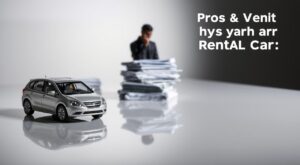There are hundreds of different car engine designs in the market. The v-type engine is one of the best categories of engine types in the market.
The V-engine split the cylinders into two banks and has internal engine combustion. The alignment of cylinders around the crankshaft banks forms a V-shape. The two banks are at an angle to each other.
There are different types of V-engine; V12, V8, V6, V4, V3, and V-twin engines. Let’s take a look at the pros and cons of V-engines.
Pros:
1. Different sizes: V-engine is designed in a variety of sizes ranging from the 2-cylinder engine to 24-cylinder engines.
2. Short engine: V-engines are short and compact. The engine can use a large variety of fuels which can be stored in the self-sealing tank.
3. Wide installation: Due to the lightweight nature and small form factor of the engines, they can be installed in a wide variety of vehicles including small motorcycles.
4. Improved efficiency: The car engine weight can determine the car balance. A well-balanced car leads to improved efficiency.
5. Powerful: Vehicles with this type of engine are very powerful and they can be installed in FWD, RWD, or AWD engine bay vehicles. Due to the small engine size, more space is created in the car, and power requirements for the car increase. The vehicles have good power to weight ratio.
6. Greater displacement: The V8 engine has two extra cylinders than the v6 engines and this adds more power and torque to the vehicle. It also makes the vehicle run more smoothly.
7. Performance: The V-engine type outperforms the inline and flat engine types. The V-configuration designs are compact and rigid.
8. Faster: The small crankshaft in the engines enables your vehicle to move faster. The compact design increases car speed and transmits more power from the cylinders to the flywheel.
9. More torque: The V-engine adds more torque to the vehicles. It enables the vehicle to perform better even in tough terrain.
10. More pistons: V-engines have 6 to 12 pistons which make the engine transfer more force in the cylinder to the crankshaft. This creates more combustion in the vehicle to increase pressure. The engine is amplified to have more cylinders.
Cons:
1. Unbalanced car: If the engine is not well aligned, it leads to an unbalanced vehicle. The engine should be well installed to make the car stable and avoid unbalancing issues when driving the vehicle.
2. Complex design: The V-engines are complicated to manufacture and service due to their complex nature and arranging of the cylinders to form the V-shape.
3. Mechanical stress and vibration: Unbalancing of the car due to incorrect installation of the engine cause mechanical stress and vibration to the car. The car needs additional mechanisms in order to solve the imbalance issue.
4. Expensive: Compared to other engine types, V-engine is more expensive.
5. Fuel consumption: V-engine is not fuel economical. If you install this type of engine in your car especially the V8 engine, be prepared to spend more on fuel.
6. Maintenance: Due to the complex nature of the engines, their very expensive to maintain and make.
7. More components: V-engine is made of more components that make the engine more expensive and complex compared to other engine types.
8. Heavier: The different components fitted in the V-engine makes it heavier. The heavier engines need a lot of support to ensure are well balanced in the vehicle.
9. Cooling problem: V-engine use a single carburetor at the middle v-angle to feed both cylinders, this can result in cooling problems in the rear cylinder when the exhaust port is placed at the back where the airflow is not enough.
10. Location of Valves: The location of the valves in the crankshaft affects the design of the cylinder block with a four-stroke cycle engine.


